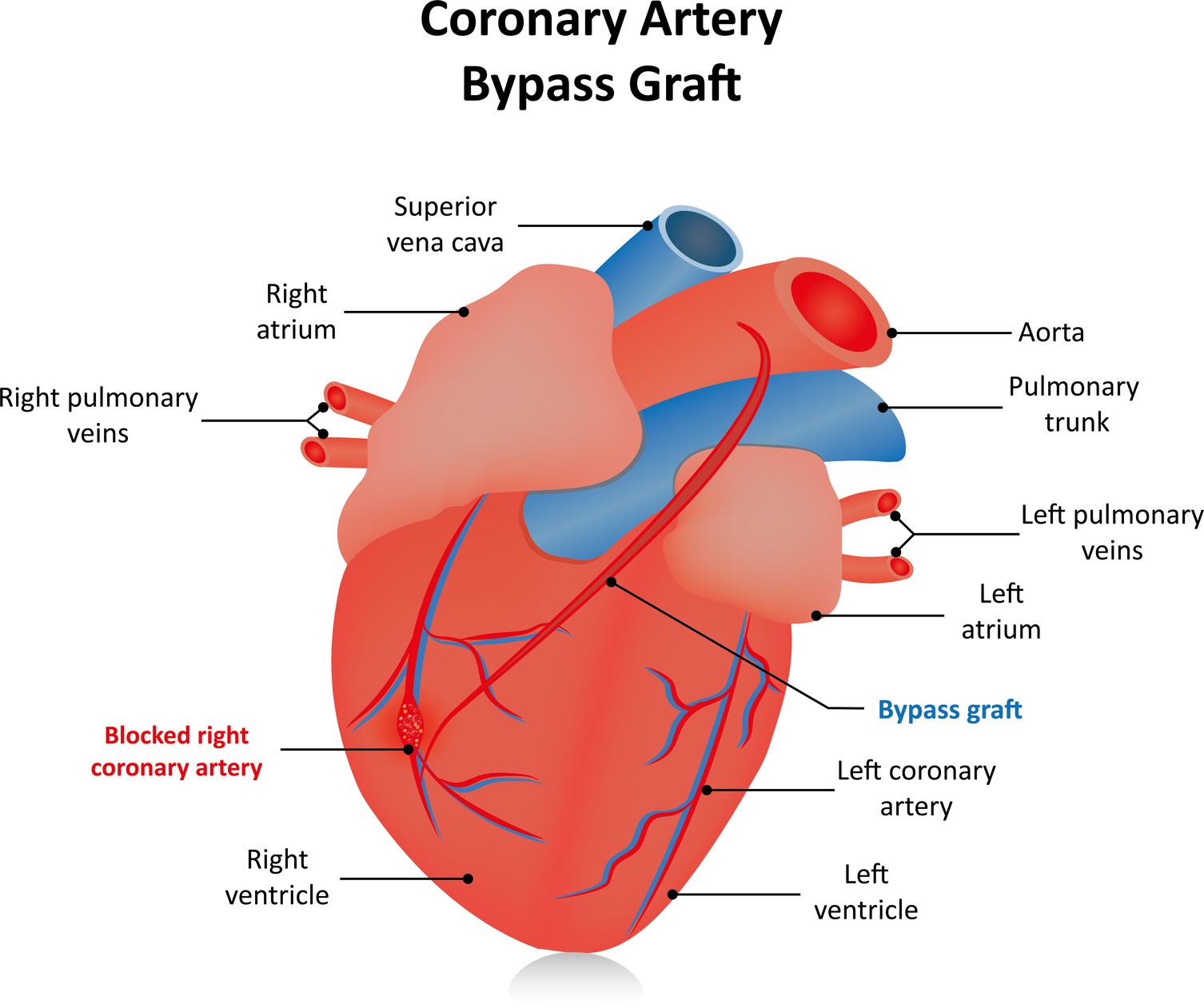Coronary artery bypass surgery, also known as coronary artery bypass graft (CAGB, pronounced ‘cabbage’) surgery, heart bypass or bypass surgery, is performed to restore blood flow by surgically treating a heart with an obstructed coronary artery. It uses blood vessels taken from another part of the patient’s body to bypass blocked or narrowed coronary arteries, improving blood and oxygen flow to the patient’s heart muscle by creating new pathways.

Indications
Patients may have experienced severe chest pains caused by the narrowing of several arteries and vessels, and their heart may have difficulty providing enough blood and oxygen for their body even at times of light exercise or at rest. Although angioplasty is likely to be considered first, for some types of blockage coronary bypass surgery may be the best option in such situations as:
-
If the left main coronary artery is severely narrowed or blocked. This artery supplies most of the blood to the heart’s left ventricle.
-
At times when angioplasty is deemed unsuitable, such as when a previous stent placement has failed or restenosis has occurred.
-
In emergency situations, such as when a heart attack has occurred, when one is likely to occur, or in cases of vessel injury.
-
Neither surgeries or endovascular treatments cure the underlying heart disease which caused the blockages in the first place. These treatments treat only the outcome of the underlying condition.
How Is It Performed?
- The doctor will take a healthy blood vessel from the patient’s chest, arm or leg.
- The surgeon attaches one end of the healthy vein to an area of the heart above the blockage in the artery. The other end is attached to an area of the coronary artery below where it is clogged.
- Blood and oxygen can flow through this new path to the heart
- It is possible to have more than one CABG depending on how many arteries are clogged or narrowed.
What Is The Surgery Like?
Patients will be asleep during the operation. The surgery takes 3-6 hours and requires general anesthesia. The duration depends on the procedures that need to performed and complexity of the patient’s case.
After the surgery patients needs to rest in the intensive care unit for a few days (1or 2 days depending the patient’s case)
What Happens After My CABG?
- It doesn’t matter how effective and efficient the treatment modality is, lifestyle changes are still a necessary part of the treatment after surgery. Medications will become patients’ routine after coronary bypass surgery to lower their blood cholesterol, reduce the risk of developing a blood clot and help their heart function as well as possible.
- Patients need to stay in the hospital for around 2-3 days after having their CABG (after spending some time in the intensive care unit) so that the medical stuff can watch patients’ condition and their recovery.
- During this time, patients will attached to several tubes, drips and drains. They will be removed as the patient get better. It is likely to have some soreness and grogginess after the procedure. Patients will be given painkillers to help relieve any pain.
- Patient can expect a recovery period of about 4 to 12 weeks. In most cases patients can return to their daily activities (working, driving, exercising, having sex) in 4 weeks but, of course, they must have their doctor’s OK in doing so. By three months, patients are likely to be fully recovered. Patients may have complications before, during or after surgery, in this case, their recovery time is likely to be longer.
- Patients will be fit to fly 10-15 days after the operation if there are no complications and the patient has the doctor’s approval in doing so.
